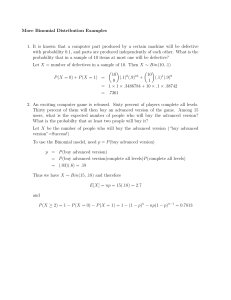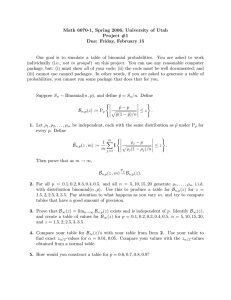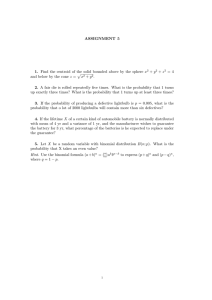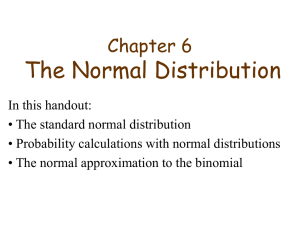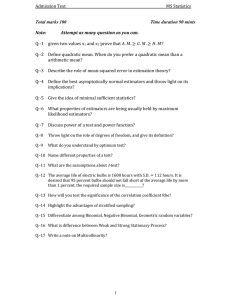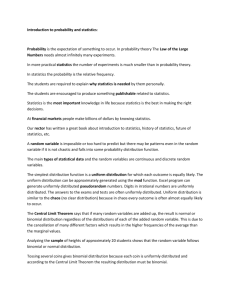6.3 Binomial Activity Binomial Rules: E(X)=µ= np VAR(X)=σ2= np(1-p)
advertisement
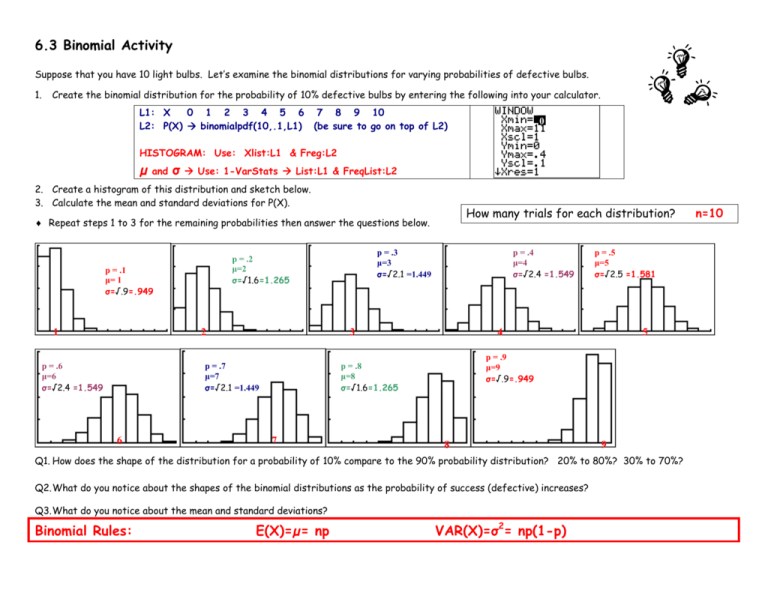
6.3 Binomial Activity Suppose that you have 10 light bulbs. Let’s examine the binomial distributions for varying probabilities of defective bulbs. 1. Create the binomial distribution for the probability of 10% defective bulbs by entering the following into your calculator. L1: X 0 1 2 3 4 5 6 7 8 9 10 L2: P(X) binomialpdf(10,.1,L1) (be sure to go on top of L2) 0 HISTOGRAM: Use: Xlist:L1 & Freg:L2 µ and σ Use: 1-VarStats List:L1 & FreqList:L2 2. Create a histogram of this distribution and sketch below. 3. Calculate the mean and standard deviations for P(X). How many trials for each distribution? Repeat steps 1 to 3 for the remaining probabilities then answer the questions below. p = .1 μ= 1 σ=√.9=.949 1 2 p = .6 μ=6 σ=√2.4 =1.549 p = .4 μ=4 σ=√2.4 =1.549 3 7 p = .5 μ=5 σ=√2.5 =1.581 4 5 p = .9 μ=9 σ=√.9=.949 p = .8 μ=8 σ=√1.6=1.265 p = .7 μ=7 σ=√2.1 =1.449 6 p = .3 μ=3 σ=√2.1 =1.449 p = .2 μ=2 σ=√1.6=1.265 8 9 Q1. How does the shape of the distribution for a probability of 10% compare to the 90% probability distribution? 20% to 80%? 30% to 70%? Q2. What do you notice about the shapes of the binomial distributions as the probability of success (defective) increases? Q3. What do you notice about the mean and standard deviations? Binomial Rules: E(X)=µ= np VAR(X)=σ2= np(1-p) n=10
